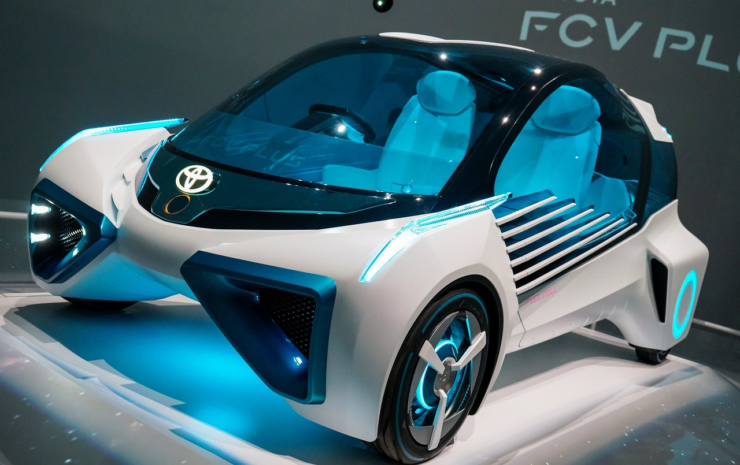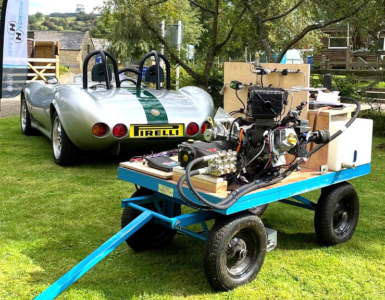How Hydrogen Combustion Engines Will Challenge The EV Market At Its Core – TopSpeed.
Electric vehicles (EVs) may reign supreme in the clean transportation conversation, but a silent revolution is brewing beneath the hood of a different technology: the hydrogen combustion engine (HCE). The story of hydrogen as a fuel stretches back centuries. In 1766, Henry Cavendish first identified and isolated hydrogen, recognizing its unique properties. Throughout the 19th and early 20th centuries, hydrogen found applications in diverse fields, from powering airships to illuminating homes. However, the rise of fossil fuels eclipsed hydrogen’s prominence, relegating it to niche industrial uses.
In recent decades, concerns about climate change and dwindling oil reserves have rekindled interest in hydrogen as a clean and sustainable fuel source. Hydrogen’s potential for decarbonizing various sectors, including transportation, has spurred renewed research and development efforts. The HCE represents a distinct approach to harnessing hydrogen’s clean-burning potential. Unlike FCEVs, which rely on complex and expensive fuel cell technology, HCEs leverage the established infrastructure and engineering principles of internal combustion engines. This inherent familiarity makes HCEs a potentially more accessible and cost-effective pathway to hydrogen-powered transportation.
Unlike its electric cousin, the fuel cell electric vehicle (FCEV), which uses hydrogen to generate electricity for an electric motor, the HCE operates on a simpler, yet potentially disruptive, principle. It burns hydrogen directly in a modified version of the familiar internal combustion engine, releasing only water vapor as exhaust. This seemingly audacious approach throws down the gauntlet to EVs, promising to challenge their dominance with a unique set of strengths.
🔥 What about we co-host a webinar? Let's educate, captivate, and convert the hydrogen economy!
Hydrogen Central is the global go-to online magazine for the hydrogen economy, we can help you host impactful webinars that become a global reference on your topic and are an evergreen source of leads. Click here to request more details
At its core, the HCE operates remarkably similar to its gasoline-powered counterpart. Air is drawn into the cylinders, mixed with injected hydrogen fuel, and then ignited by a spark plug. The resulting combustion generates heat and pressure, driving the pistons and ultimately powering the vehicle.
However, the crucial difference lies in the fuel. Hydrogen, the lightest and most abundant element in the universe, burns cleanly, producing only water vapor as a byproduct. This eliminates the tailpipe emissions of harmful pollutants and greenhouse gases that plague traditional gasoline engines, offering a compelling environmental advantage.
In this arena, Toyota stands tall as a frontrunner, pioneering HCE development for over two decades with unwavering dedication and a robust portfolio of advancements. Toyota’s HCE journey began in the early 2000s, fueled by a vision of a future powered by clean and abundant hydrogen. Since then, the automaker has relentlessly pursued research and development, accumulating a treasure trove of knowledge and practical experience. This dedication has manifested in a trailblazing lineup of HCE prototypes, each showcasing the technology’s potential to reshape the automotive landscape.
One gleaming example is the hydrogen-powered Hilux prototype, a testament to HCE’s ability to adapt to diverse vehicle categories. The iconic pickup truck, renowned for its ruggedness and versatility, seamlessly integrates HCE technology while retaining its signature capabilities. This paves the way for a future where clean and sustainable transportation extends beyond passenger cars, reaching vital segments like utility vehicles and commercial fleets.
Furthermore, the HiAce hydrogen prototype reimagines the popular van for a hydrogen-fueled future. This versatile workhorse, employed in various industries for deliveries and transportation, stands poised to benefit from the clean and efficient operation promised by HCEs. The HiAce prototype demonstrates the technology’s suitability for commercial applications, potentially transforming how businesses operate and reducing their environmental footprint.
But Toyota’s ambitions stretch beyond practicality; they yearn to push the boundaries of performance. The GR Corolla H2 concept car serves as a thrilling example, injecting the excitement of high-performance driving into the world of HCEs. This rally-inspired hatchback, brimming with hydrogen-powered vigor, shatters the misconception that sustainable technology compromises driving exhilaration. The GR Corolla H2 signifies Toyota’s commitment to developing HCEs that cater to driving enthusiasts, ensuring a future where environmental consciousness and thrilling performance coexist seamlessly.
Toyota’s dedication to HCE development extends beyond captivating prototypes; it delves into the very core of the technology, addressing potential challenges that could hinder widespread adoption. One such hurdle is engine overheating, a concern often raised regarding HCEs. To tackle this head-on, Toyota recently filed a patent for a water-cooled HCE design. This innovative approach promises to dissipate heat more effectively, paving the way for HCEs that operate with optimal efficiency and reliability.
One of the most glaring drawbacks of EVs is their prolonged charging times. Even with fast-charging technology, replenishing batteries can take hours, significantly impacting travel flexibility. HCEs, on the other hand, boast refueling times comparable to conventional gasoline vehicles, typically taking only minutes to replenish their hydrogen tanks. This convenience factor could be a game-changer for long-distance travel and fleet operations, where minimizing downtime is crucial.
Miles More to Explore
Another area where HCEs potentially outpace EVs is driving range. The high energy density of hydrogen fuel allows HCEs to travel significantly farther on a single “tank” compared to most electric vehicles. This extended range translates to greater freedom and less frequent refueling stops, particularly appealing for individuals with active lifestyles or those venturing into remote areas.
While EVs undoubtedly contribute to emissions reduction, the environmental concerns surrounding battery production and disposal cannot be ignored. The mining of raw materials and the energy-intensive manufacturing processes raise questions about the life-cycle sustainability of these vehicles.
HCEs, in contrast, offer a potentially cleaner alternative. While hydrogen production can also be energy-intensive, advancements in renewable electrolysis technologies promise a greener future for this fuel source. Additionally, the lack of heavy metals and the minimal emissions of water vapor from HCEs contribute to a potentially more holistic approach to environmental sustainability.
While hydrogen combustion engines (HCEs) offer a compelling alternative to battery-powered electric vehicles (EVs), their path to widespread adoption is strewn with significant challenges. These hurdles, spanning infrastructure, cost, and technical hurdles, must be addressed before HCEs can truly challenge the EV market’s dominance.
The Achilles’ heel of HCEs lies in the limited infrastructure for hydrogen refueling. Unlike the ubiquitous network of gas stations catering to conventional vehicles, hydrogen fueling stations remain scarce and geographically concentrated. This scarcity creates a “chicken and egg” dilemma: drivers are hesitant to invest in HCEs without readily available refueling options, while the lack of demand discourages widespread investment in stations.
HCE technology currently carries a hefty price tag compared to conventional gasoline engines. This higher cost stems from the complexity of HCEs, which require specialized components and materials to handle the unique properties of hydrogen fuel. Additionally, the nascent stage of the technology means economies of scale haven’t yet kicked in, further inflating production costs.
To bridge this price gap, advancements in engine design and manufacturing processes are crucial. Streamlining production and utilizing readily available materials can bring down costs. Furthermore, fostering a robust HCE market will attract increased investment and competition, ultimately driving down prices through economies of scale.
Beyond infrastructure and cost, technical hurdles also need to be tackled to optimize the HCE experience. One challenge lies in fuel storage. While hydrogen boasts high energy density, its bulky storage tanks can eat into passenger and cargo space in vehicles. Research into novel storage materials and tank designs is crucial to improve space efficiency and range.
Government policies can play a pivotal role in shaping the trajectory of HCEs. Stringent emission regulations and incentives for clean transportation technologies can create a favorable market environment for HCEs. Conversely, inadequate support or policies favoring alternative technologies like pure electric vehicles can hinder HCE adoption. Collaborative efforts between policymakers, industry stakeholders, and research institutions are crucial to create a supportive policy landscape that fosters innovation and infrastructure development.
The road ahead for HCEs is undoubtedly challenging. Overcoming the hurdles of infrastructure, cost, and technical limitations requires sustained investment, technological advancements, and supportive policies. However, the potential rewards are substantial.
HCEs offer a compelling alternative to EVs, addressing range anxiety and potentially mitigating concerns about battery production and disposal. While the climb to widespread adoption will be steep, the potential of HCEs to challenge the EV market at its core makes the journey worth pursuing.
READ the latest news shaping the hydrogen market at Hydrogen Central
How Hydrogen Combustion Engines Will Challenge The EV Market At Its Core – TopSpeed. source








